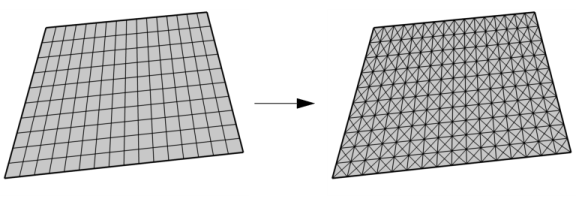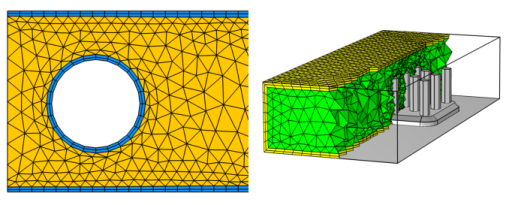You can create a structured triangular mesh on domains in 2D and on faces in 3D by using the Convert operation. There is an option to either introduce a centerpoint (shown in
Figure 8-5), or a diagonal edge to quadrilateral elements.

The Mapped mesher generates a structured mesh with quadrilateral elements (as shown to the left in
Figure 8-5).
The Swept operation generates a structured mesh (at least in the direction of the sweep) with prism or hexahedral elements, as shown in
Figure 8-6.

The Boundary Layers operation also generates a structured mesh. A boundary layer mesh has a dense element distribution in the normal direction along specific boundaries, integrating into an existing structured or unstructured mesh.



